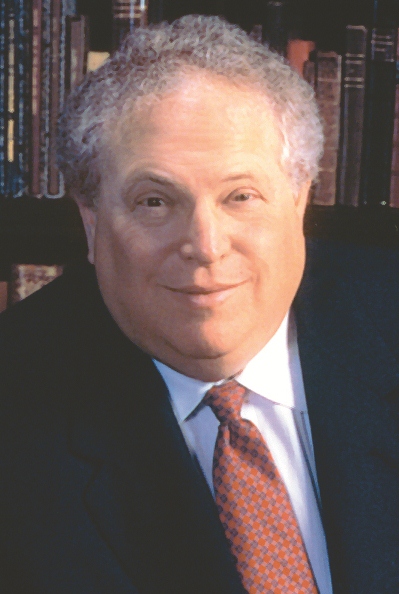 W.R. Berkley Corp. Chairman and CEO William R.Berkley vigorously defended the company's reserving practices on aninvestor conference call today, stating that, if anything, theinsurer leans toward being more conservative.
W.R. Berkley Corp. Chairman and CEO William R.Berkley vigorously defended the company's reserving practices on aninvestor conference call today, stating that, if anything, theinsurer leans toward being more conservative.
"The fact is we have had over seven years of positivedevelopment, which I might point out is twice the average durationof our loss reserves," Berkley said.
|He added, "It would be hard—in spite of at least one personpointing out that they think we're short of reserves—to continuethat process if that were the case. But there are people who writefairytales as well as historical facts."
|One analyst that had questioned Berkley's reserve strength wasDeutsche Bank's Joshua Shanker, who, according to StreetInsider.com, said in late January, "Webelieve prior-year reserve deficiencies have been growing atBerkley for three years. While the company continues to report netfavorable prior-year reserve development, we note that the amountsare lessening. Further, we believe that reserve releases relate toshort-tail lines in recent accident years, and our concerns areover long-tailed reserves for more mature accident years."
|In an April 1 Industry Update, Shanker said W.R. Berkleymanagement provided two supplemental schedules of workers' compdata breaking out primary and excess businesses separately. Thatshowed reserves for workers' comp appeared to be redundant by $105million, rather than deficient by $607 million when analyzed in theaggregate, as was reported in the National Association of InsuranceCommissioners' published Schedule P data Deutsche Bank used for itsanalysis.
|But Shanker added in the report that, across all liabilitylines, the company still appeared to be deficient by about $600million. "Though we may be less emphatic on our conclusion thatreserves are deficient, we still see concerning trends in thedata—albeit less than we noted in prior years," the analysissaid.
|On the Q1 conference call, Berkley said, "We did have a periodof time back over 10 years ago when we were concerned about ourreserves, and we changed everything we did about our reservingprocess and practices. So now we have a tendency to be moreconservative," which in fact over the long run is probably anadditional problem because we end up being more conservative thanwe would like to be."
|For the first quarter, W.R. Berkley CFO Eugene G. Ballard saidreserve releases were $25 million compared to $23.5 million in2013's first quarter. He said over $25 million in domesticinsurance reserve releases were slightly offset by "very modest"increases in prior-year reserves for the international andreinsurance segments.
|Shanker declined to comment beyond the remarks in the April 1Industry Update.
||
Q1 Results
|For the first quarter, W.R. Berkley reports net income to commonstockholders of $169.7 million, up from $116.6 million in 2013'sfirst quarter.
|The combined ratio improved to 93.9 in the quarter, compared to94.7 a year ago. For domestic insurance, the combined ratio was92.2, for international insurance it was 99.3 and for reinsuranceit was 97.4. The combined ratio increased in both international andreinsurance.
|Net premiums written increased to over $1.5 billion from under$1.4 billion a year ago.
||
State of the market and the "unforeseenevent"
|Even in the age of analytics and big data, the "unforeseenevent" will end up throwing a wrench into insurers' plans andexpectations, Berkley said.
|Speaking about the state of the market on the company's Q1results conference call, Berkley said, "The unforeseen event iswhat changes the pattern of behavior, and the advent of big dataand all kinds of analytics—and people's belief in the certainly ofsuch—is taking us down a particular path." He added, "Alot of people have bet big amounts on the certainty of actuarialscience and the mathematics of big data," but he noted, "I thinkwhat's going to surprise people is that unforeseen event when itcomes."
|Judging by the history of the insurance industry, Berkley said,"you know [that event is] sitting out there," and even so, he saidit "always surprises you."
|Regarding the rate environment in the domestic insurance market,COO W. Robert Berkley said on the call it is "modestly morecompetitive" than the recent past, but he stated it is stillpossible to raise rates beyond loss-cost trends, and suggested thatshould continue to be the case for the rest of theyear.
|"Market conditions are not going to become terribly morecompetitive," he said.
|Expanding on insurers' behavior in the current market, RobertBerkley, speaking generally, said large national carriers appear tobe "taking their foot slightly off the rate pedal and looking forways to not shrink their business as far as count goes" as theycontinue to grapple with growth and a desire for rate. But he sayscarriers are being selective, and only becoming "marginally moreaggressive" for lines of business they believe they "have theirhead around."
|William Berkley pointed out problems some companies are runninginto as they enter a new line. He said some companies see classesof business that look attractive, but they enter the "leastattractive place" in that business because that is where they canget in. "The differential between good places and good niches andbad has never been greater," he said.
|In general, Robert Berkley said casualty business and workers'comp remain "among the most attractive," but he said that can varyby territory or class.
|Commercial transportation he called "a great puzzle to us,"noting that the line has seemed ripe for more hardening for sometime, but has not. He said there is "some commonality with what wesaw in workers' comp a few years ago."
Want to continue reading?
Become a Free PropertyCasualty360 Digital Reader
Your access to unlimited PropertyCasualty360 content isn’t changing.
Once you are an ALM digital member, you’ll receive:
- All PropertyCasualty360.com news coverage, best practices, and in-depth analysis.
- Educational webcasts, resources from industry leaders, and informative newsletters.
- Other award-winning websites including BenefitsPRO.com and ThinkAdvisor.com.
Already have an account? Sign In
© 2024 ALM Global, LLC, All Rights Reserved. Request academic re-use from www.copyright.com. All other uses, submit a request to [email protected]. For more information visit Asset & Logo Licensing.








